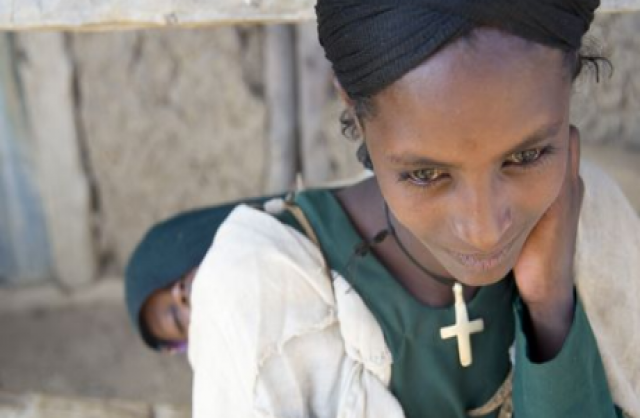 (Photo: David Snyder/ICRW)
(Photo: David Snyder/ICRW)
The Word on Women – A second chance for Ethiopia’s child brides (Trust.org)
By Jeff Edmeades
Washington, DC – Once again, I have just returned to my home base in Washington, DC after spending several weeks in Ethiopia’s deeply poor, yet breathtaking, Amhara region. And once again – as is always the case – I was inspired by the sheer enthusiasm and thirst for opportunity among an often forgotten group: child brides.
Amhara has one of the highest rates of child marriage in the world, with around three quarters of women aged 20 to 24 marrying before their 18th birthday. Over the past three years, I’ve been involved in an innovative project run by the aid agency CARE that is aiming to give these girls and young women who were married too young – some in their very early teenage years – a second lease on life. Their experiences of marriage are often quite similar, typically involving arranged unions either preceded or accompanied by school dropout.
The lessons learned from these often heartbreaking stories couldn’t be more relevant this week as former Prime Minister Gordon Brown meets with G8 Finance Ministers at the World Bank in Washington in his capacity as UN Special Envoy for Global Education.
In my conversations with these young wives, most have told me that they are hungry to return to school. For child brides in Ethiopia and worldwide, school often represents much more than just a chance to learn. It opens the opportunity both to dream big and to achieve small milestones, like simply having friends their own age with whom to talk and laugh.
The past two decades have seen a remarkable improvement in youth access to education throughout the world. More children and young adults are enrolled in school than perhaps at any point in human history. Yet despite these improvements, adolescent girls – especially those who are poor, living in a rural area, or belonging to a minority ethnic group – continue to miss out on the opportunity to go to school.
The most recent data suggest that 39 million girls between 11 and 15 years old are out of school worldwide, with some estimates suggesting that the total for all adolescents (ages 11-19) is as high as 60 million. These girls more likely to suffer from poorer health, experience greater poverty and be exposed to higher levels of domestic violence. Meanwhile, the social stability, economic growth, and basic well-being of uneducated girls’ families, communities and societies are more likely to deteriorate.
The evidence suggests that early marriage is certainly linked to school drop outs. However, it also shows that the main driver is much broader and much more difficult to address: entrenched, pervasive social norms that govern expectations about what girls can and will do with their lives – fueling both early marriage and school dropout. This isn’t to say that encouraging an emphasis on greater education for girls will not influence very early marriage, but rather, any attempt to address either educational outcomes or child marriage must begin by directly challenging social norms around gender.
This is what the International Center for Research on Women is doing in partnership with CARE and other local organizations in Ethiopia, and it is working. We’ve found that providing married adolescent girls with the skills – through trainings and education – to effectively challenge social norms from within their own communities has proven to be a powerful tool of transformation for girls and their communities. This is particularly the case when paired with effective community engagement and support.
Yes, there are many reasons why girls do not stay in school long enough to learn the critical skills they need in a world that increasingly demands formal educational qualifications. But the main reason is simply because they are girls.
We can begin changing this on a much larger scale by working with whole communities and involving parents, religious or traditional leaders, and other influential community members, as these individuals have the greatest direct influence on girls’ aspirations and behavior. Programs aimed at improving the lives of adolescent girls should be integrated, focusing on building girls’ health, their access to social support and economic opportunities, and above all should address expectations about the roles of girls and women in society. Economic interventions must develop realistic options for girls that boost their chances at staying in school and delaying marriage.
Finally, let’s not forget to work with girls who are already married, like those I visited in Ethiopia’s Amhara region; they have largely fallen off the radar of many policymakers and lie almost completely outside of any government support systems. Meanwhile, if current trends hold, an estimated 142 million adolescent girls will marry over the next decade. Let’s work to provide these girls with a chance to return to school and develop the skills and support networks that they deserve – and have the right to experience.
—
Jeff Edmeades is a Child Marriage Researcher for the International Center for Research on Women in Washington, DC.
—
Join the conversation on Twitter and Facebook.

























